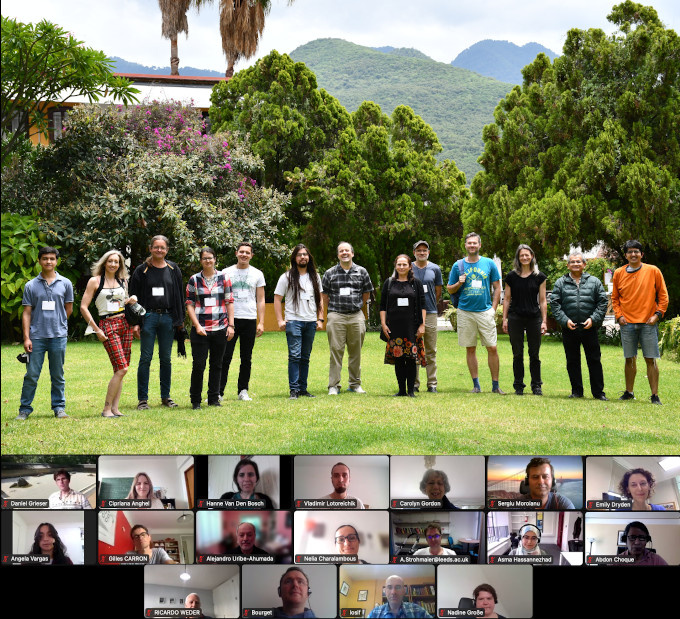Analytic and Geometric Aspects of Spectral Theory (22w5149)
Organizers
Olaf Post (University of Trier)
Clara Aldana (Universidad del Norte)
David Sher (DePaul University)
Monika Winklmeier (Universidad de los Andes)
Description
The Casa Matemática Oaxaca (CMO) will host the "Analytic and Geometric Aspects of Spectral Theory" workshop in Oaxaca, from August 14 - August 19, 2022.
“Spectral Theory” seeks to explain how a bell or a more complicated curved surface sounds when it vibrates, using the language of mathematics. Mathematicians want to characterize the sounds produced by a given surface. A more advanced question is: if a blind person hears a sound, can this person infer something about the surface that produces the sound? Though we can deduce some properties, such as the area of the surface, from its sound, many of these questions are still unsolved. For example, we do not know yet whether there are two different drums with smooth borders which sound the same. Other branches of spectral theory relate to other physical phenomena, for example, how heat propagates on a given space, and what frequencies allow waves to travel through a given material.
In the workshop we want to bring together researchers of different scientific backgrounds at different stages of their academic career from all over the world in order to provide them with a stimulating environment. There will be several survey talks, but the main focus of the workshop will be working in groups. We will especially encourage women and researchers from Latin America to participate in the workshop to increase their visibility within the scientific community.
The Casa Matemática Oaxaca (CMO) in Mexico, and the Banff International Research Station for Mathematical Innovation and Discovery (BIRS) in Banff, are collaborative Canada-US-Mexico ventures that provide an environment for creative interaction as well as the exchange of ideas, knowledge, and methods within the Mathematical Sciences, with related disciplines and with industry. The research station in Banff is supported by Canada's Natural Science and Engineering Research Council (NSERC), the U.S. National Science Foundation (NSF), Alberta's Advanced Education and Technology, and Mexico's Consejo Nacional de Ciencia y Tecnología (CONACYT). The research station in Oaxaca is funded by CONACYT






